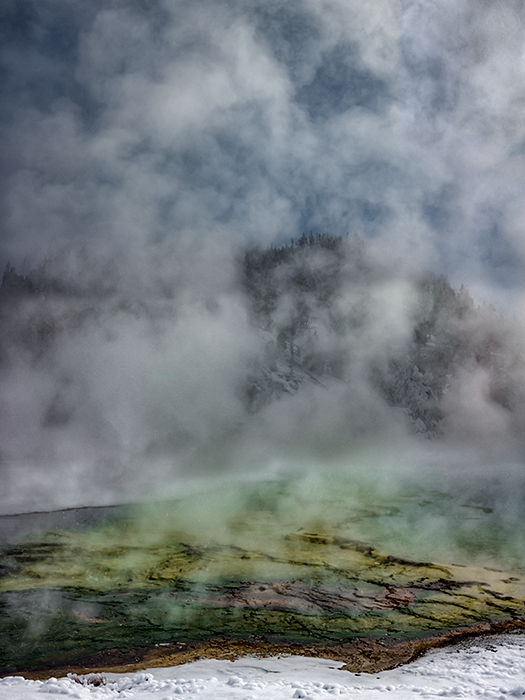Terrestrial hot spring
Early evolution
Exterior analogue
Because of numerous active hydrothermal features, Yellowstone is especially magnificent during the cold of winter. Certain heat loving microorganism species reside in these hydrothermal ecosystems and often appear as masses of color. That thermophiles can thrive in such conditions, including alkaline or acidic water of near-boiling temperatures, is extreme only in relation to human requirements.
“At the time when liquid water—a prerequisite for life as we know it—appears in the geological record (3800 billion years ago), Earth was a hot, anoxic environment and under constant bombardment by meteors, many of which could have virtually vaporized the oceans. Early Earth, therefore, would have been an attractive home to heat-loving thermophiles and their extreme cousins, the hyperthermophiles, where thermophily would have offered a great selective advantage.” – Anna-Louise Reysenbach

